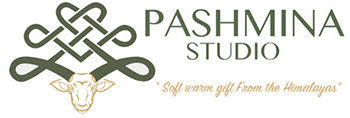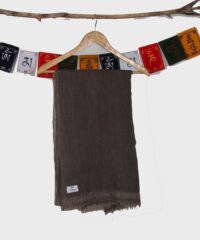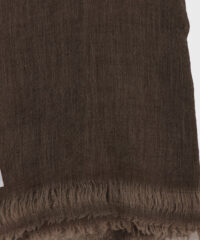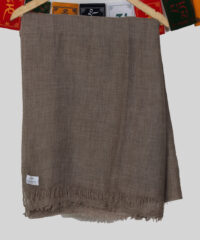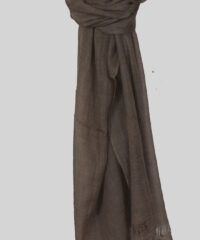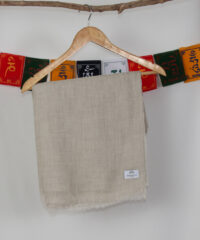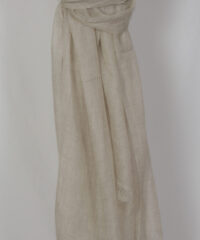Tibetian natural brown yak shawls are very versatile animal yaks produce luxury inner coat which is durable, soft and warm. They are simply true friends of Sherpa people since they are a multipurpose animal Domesticated by Himalayan people for thousands of years. They are primarily used for milk, fiber and meat, and as beasts of burden. Their dried droppings are an important fuel, used all over the Himalayas, and are often the only fuel available on the high treeless Tibetan Plateau. Yaks transport goods across mountain pass for local farmers and traders as well as for climbing and trekking expeditions. “Only one thing makes it hard to use yaks for long journeys in barren regions. They will not eat grain, which could be carried on the journey. They will starve unless they can be brought to a place where there is grass.”
Yak wool has similar properties to other animal fibers, including breathability and static resistance, but has been proven to outperform sheep wool in a number of areas.
Warmth: In woolen garments, air pockets are created between the fibers that reduce the rate of heat transfer. This property combined with lanolin (a hydrophobic grease present in wool fibers) allowing the wool to keep you warm when wet. Yak wool is rich in myristic acid a type of hydrophobic fatty acid. Independently conducted tests on yak down suggest that it is warmer than Merino wool. Nonetheless, claims vary on how much warmer it is with values ranging between 10 and 40 percent.
Softness: Cashmere is known in the textile industry as one of the softest wools with a fiber diameter of less than 18.5. The diameter of the down fiber of the yak also ranges 16–20 microns making its softness comparable to that of cashmere. Species-specific DNA probes have been developed to identify yak, which is used to quantitatively test yak-cashmere blends. Although cashmere has already been firmly established in the market, yak wool has the potential to be sold as a luxury product due to its softness and the (currently) sustainable and eco-friendly means used for gathering the fibers.
Breathability: In general, wool’s comfort comes from its thermo-balance characteristics. The breathability factor of a material depends on its ability to absorb moisture relative to its weight and then release it into the air. The higher the absorption value the better the textile is at adapting to humidity level changes. Wool can absorb over 30 percent of moisture, greater than cotton(25 percent) and far greater than polyester which can absorb only 1 percent of its weight.
Odor-resistance: Contrary to popular belief, yaks do not have a strong odor. Unless combined with the bacteria that live on the skin, sweat is odorless. The anti-microbial properties of yak fibers prevent bacteria from living on sweat thereby considerably reducing odor.
-
Brown Yak Shawl
$240.00 Buy Via Whatsapp -
Natural Beige Yak Shawl
$280.00 Buy Via Whatsapp -
Albino white yak shawl
$290.00 Buy Via Whatsapp
